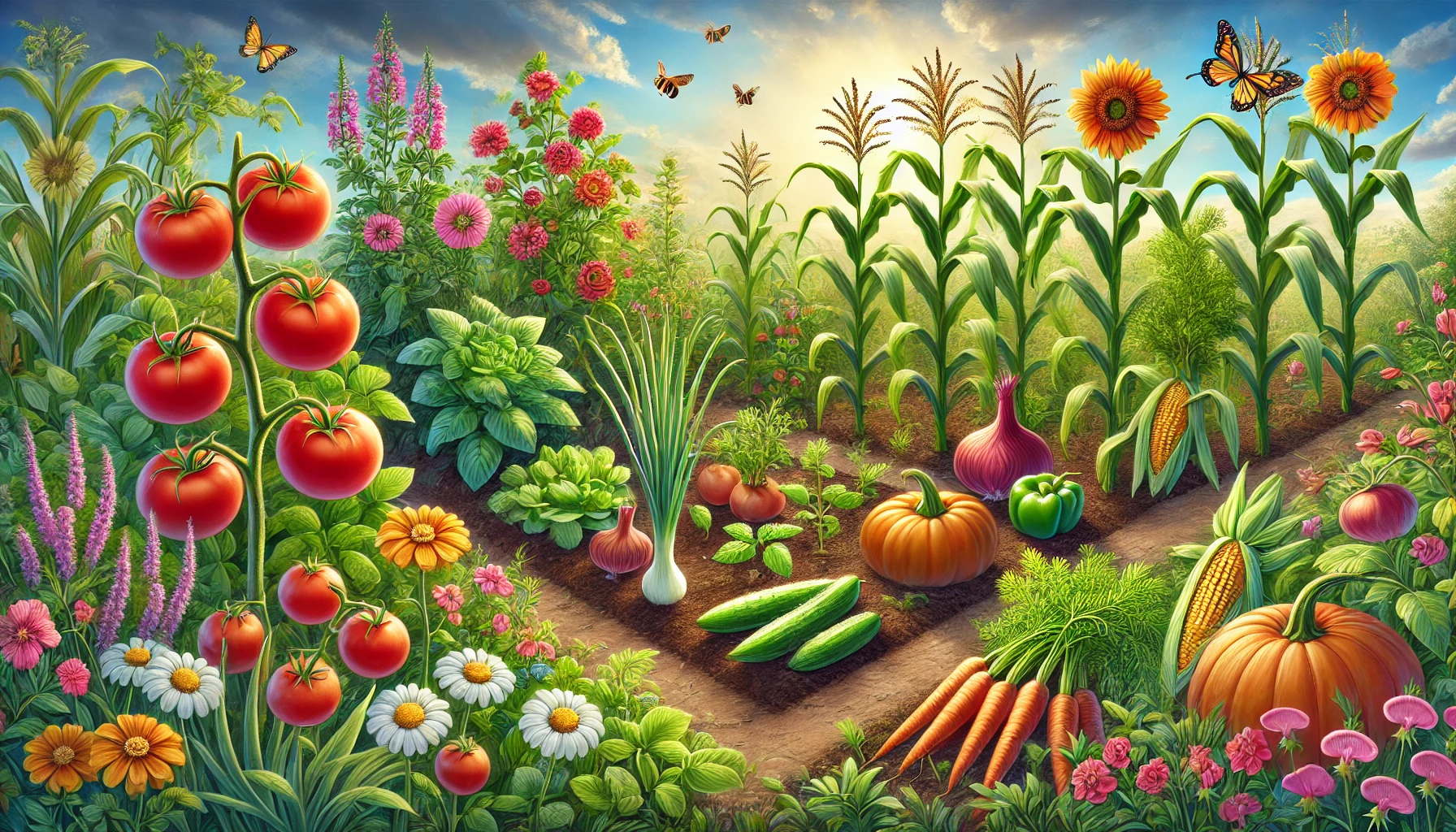Companion planting is a gardening technique that involves growing specific plants together to enhance growth, repel pests, improve soil health, and increase yields. By strategically pairing plants, you can create a thriving, symbiotic garden ecosystem. This guide will explain how to use companion planting effectively and which plant combinations work best.
Benefits of Companion Planting
- Pest Control: Certain plants repel pests naturally, reducing the need for chemical pesticides.
- Improved Growth: Some plants enhance the growth of their neighbors by releasing beneficial compounds into the soil.
- Better Pollination: Companion plants attract pollinators, which boost the productivity of fruiting plants.
- Efficient Space Use: Pairing plants with complementary growth habits maximizes garden space.
- Soil Health: Some plants improve soil structure or fix nitrogen, benefiting surrounding crops.
Popular Companion Plant Pairings
1. Tomatoes and Basil
- Benefits: Basil repels tomato hornworms and aphids, while improving the flavor of tomatoes.
2. Carrots and Onions
- Benefits: Onions deter carrot flies, and carrots break up the soil, benefiting onion roots.
3. Corn, Beans, and Squash (The Three Sisters)
- Benefits: Corn provides support for beans to climb, beans fix nitrogen in the soil, and squash suppresses weeds and retains moisture.
4. Cabbage and Dill
- Benefits: Dill attracts beneficial insects like wasps that prey on cabbage pests.
5. Strawberries and Borage
- Benefits: Borage deters pests like aphids and adds nutrients to the soil, enhancing strawberry growth.
6. Roses and Garlic
- Benefits: Garlic repels aphids and other pests that commonly attack roses.
Plants to Avoid Pairing
- Beans and Onions: Onions can inhibit the growth of beans.
- Carrots and Dill: Dill can stunt carrot growth if planted too closely.
- Tomatoes and Potatoes: Both are susceptible to the same diseases, increasing the risk of infection.
How to Plan a Companion Planting Garden
1. Assess Your Garden Space
- Map out your garden, noting the size, sunlight, and soil conditions of each area.
- Group plants with similar light and water requirements.
2. Choose Compatible Plants
- Research plants that complement each other in terms of growth habits and pest control.
- Use the companion plant pairings mentioned above as a guide.
3. Consider Plant Placement
- Taller plants like corn or sunflowers can provide shade for heat-sensitive crops.
- Ground-cover plants like squash can protect the soil and suppress weeds.
4. Rotate Crops Annually
- Avoid planting the same companions in the same spot each year to prevent soil depletion and disease buildup.
Companion Planting for Pest Control
- Marigolds: Repel nematodes, aphids, and whiteflies. Great companions for tomatoes and beans.
- Nasturtiums: Trap pests like aphids, protecting nearby vegetables like cucumbers and zucchini.
- Chives: Deter Japanese beetles and carrot flies; ideal for planting near carrots and roses.
Companion Planting for Pollination
- Lavender and Mint: Attract bees and butterflies, enhancing pollination for fruiting plants like squash and cucumbers.
- Sunflowers: Serve as a beacon for pollinators and provide structural support for climbing plants.
Companion Planting for Soil Health
- Legumes (Beans, Peas): Fix nitrogen in the soil, benefiting leafy greens and corn.
- Radishes: Break up compacted soil and act as a decoy for pests, sparing other crops.
Tips for Successful Companion Planting
- Observe Plant Behavior: Pay attention to how plants interact and adjust pairings if necessary.
- Use Diverse Pairings: Incorporate a variety of plants to create a balanced ecosystem.
- Start Small: Experiment with a few companion pairings before scaling up.
Common Mistakes to Avoid
- Overcrowding Plants: Ensure each plant has enough space to grow and access sunlight.
- Ignoring Incompatible Plants: Avoid pairing plants that compete for resources or attract the same pests.
- Neglecting Soil Preparation: Companion planting works best when soil is healthy and nutrient-rich.
Conclusion
Companion planting is a natural and effective way to improve garden health, boost yields, and reduce pests. By thoughtfully pairing plants and creating a diverse ecosystem, you can enjoy a thriving garden with less maintenance. With practice and observation, companion planting can become a valuable tool in your gardening journey.
